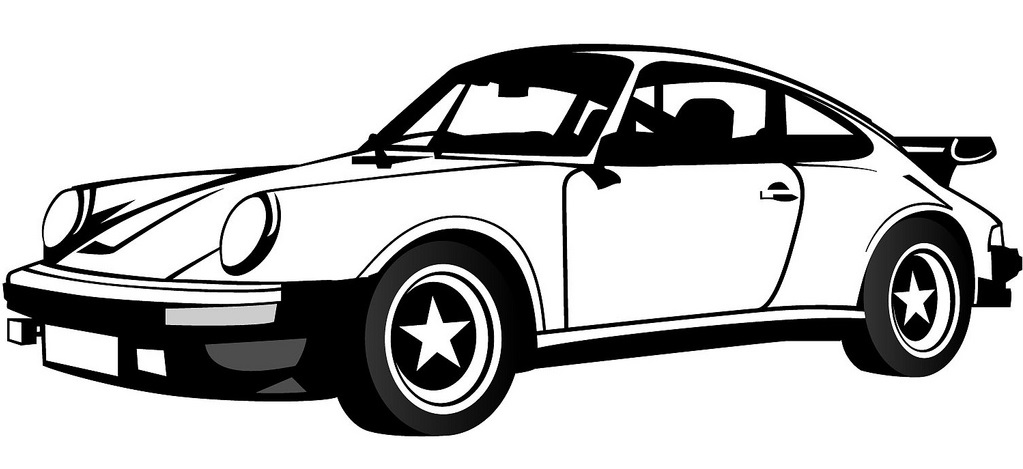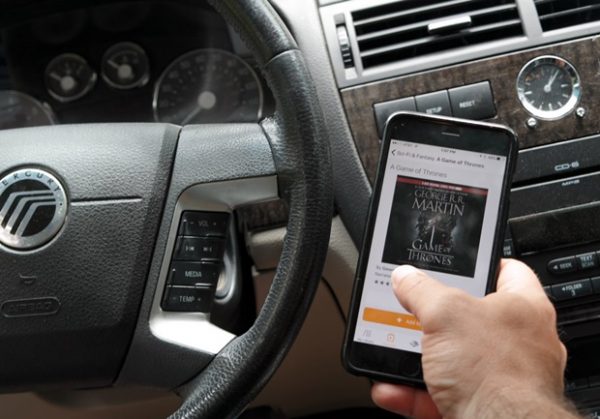A brief history of
DeLorean
Introduction
The car manufacturer DeLorean has made an important impact on the automotive world. In this article we will give a brief but detailed history of the DeLorean marque.
We will look at the origins of DeLorean looking at who, why, where and when DeLorean was founded. We'll look at the design of the iconic DeLorean logo and what are some the more significant DeLorean models.
We'll take a glance at what racing history the DeLorean has and who some of the most important people have been in the history of DeLorean over the years.
Who, where, when and why was
DeLorean founded?
Delorean Motor Company, founded by John Z. DeLorean, was a unique and short-lived car manufacturer that left an indelible mark on automotive history. The company was established in 1975 with the aim of producing a futuristic sports car that would capture the imagination of car enthusiasts worldwide.
John DeLorean, a renowned automotive executive who had previously worked for General Motors, founded the company as an ambitious venture to create a distinctive and innovative automobile. DeLorean wanted to challenge the conventions of the industry by creating a car that combined cutting-edge design, advanced technology, and high performance.
The manufacturing facility for Delorean Motor Company was located in Dunmurry, Northern Ireland. This strategic choice was influenced by several factors, including the availability of government incentives and a skilled workforce in the region. The company's headquarters, however, were established in Detroit, Michigan, USA, which was a hub of automotive expertise and innovation.
One of the driving forces behind the founding of Delorean Motor Company was the desire to introduce a revolutionary sports car that would stand out from the crowd. John DeLorean envisioned a vehicle that would blend futuristic aesthetics with exceptional performance. This vision materialized in the form of the iconic Delorean DMC-12, a stainless steel-bodied sports car with distinctive gull-wing doors.
However, despite its innovative design and advanced features, the Delorean DMC-12 faced numerous challenges in its production and marketing. Financial difficulties, production delays, and disappointing sales eventually led to the demise of the company. Nevertheless, the Delorean DMC-12 achieved cult status and gained a new level of fame after its appearance in the popular "Back to the Future" movie trilogy.
The Delorean Motor Company was founded in 1975 by John Z. DeLorean with the aspiration to create a ground breaking sports car that would capture the imagination of automotive enthusiasts. Located in Northern Ireland and with headquarters in Detroit, the company aimed to challenge industry norms and introduce a unique and futuristic vehicle. Although the company faced various obstacles and ultimately ceased operations, the Delorean DMC-12 remains an iconic symbol of automotive design and innovation.
How did the
DeLorean logo originate?

How did the DeLorean logo originate?
The logo of Delorean Motor Company, the car manufacturer founded by John Z. DeLorean, was a simple yet distinctive emblem that represented the company's innovative spirit and futuristic vision. The logo featured the company name, "Delorean," in bold capital letters, with a stylized design that added a touch of sophistication to the overall brand identity.
The Delorean logo was designed to reflect the sleek and modern aesthetics of the company's flagship model, the Delorean DMC-12. The font used for the company name was clean and geometric, emphasizing the contemporary and forward-thinking approach of the brand. The letters were carefully crafted to create a harmonious and balanced composition, capturing the essence of the car's design philosophy.
In addition to the company name, the Delorean logo also incorporated a unique symbol that became synonymous with the brand. This symbol, often referred to as the "DMC emblem," featured a stylized letter "D" enclosed within a shield-like shape. The emblem symbolized the strength, durability, and protection associated with the Delorean brand.
The color scheme of the logo was another significant aspect of its design. The choice of a sleek silver or chrome finish echoed the stainless steel body of the Delorean DMC-12, reinforcing the brand's commitment to cutting-edge materials and futuristic design. The silver color also conveyed a sense of sophistication and elegance, enhancing the overall visual appeal of the logo.
Overall, the Delorean logo embodied the innovative and modern spirit of the company. It reflected the company's commitment to pushing the boundaries of automotive design and technology. The logo's sleek typography, distinctive emblem, and silver color scheme all contributed to creating a memorable and iconic brand identity for Delorean Motor Company.
What are some of the significant
DeLorean models?
Delorean Motor Company produced a small but notable lineup of cars, with a focus on performance and innovative design. One of their most significant models was the Delorean DMC-12, which gained widespread recognition due to its iconic appearance in the "Back to the Future" movie franchise. The DMC-12 featured gull-wing doors, a stainless steel body, and a rear-mounted V6 engine. While the DMC-12 is perhaps the most recognizable Delorean model, the company also had other noteworthy vehicles in its lineup.
In the early years of Delorean's production, they introduced the Delorean DMC-6, a prototype that showcased the brand's commitment to innovation and performance. It featured a mid-mounted, 2.8-liter V6 engine and a lightweight fiberglass body. Although the DMC-6 never reached full production, it set the stage for future models by highlighting Delorean's dedication to pushing the boundaries of automotive design.
In the 1980s, Delorean unveiled the DMC-24, which was an improved version of the original DMC-12. The DMC-24 boasted a more powerful engine, upgraded suspension, and refined interior features. It aimed to address some of the criticisms of the DMC-12 and provide a higher level of performance and comfort to drivers.
In the late 1990s, Delorean introduced the DMC-48, a model that showcased the company's commitment to electric vehicle technology. The DMC-48 featured an all-electric drivetrain, reflecting Delorean's forward-thinking approach to automotive engineering. Although production of the DMC-48 was limited, it demonstrated the brand's interest in alternative power sources and sustainability.
More recently, Delorean has explored the concept of autonomous driving with the DMC-72. This futuristic model showcased advanced technology and driver-assistance features, aligning with the industry's evolving focus on autonomous vehicles. The DMC-72 aimed to blend performance and cutting-edge technology, offering a glimpse into Delorean's vision for the future of transportation.
Throughout its history, Delorean Motor Company consistently sought to produce vehicles that combined performance, innovation, and distinctive design. While the DMC-12 remains the brand's most iconic model, the DMC-6, DMC-24, DMC-48, and DMC-72 all played a role in showcasing Delorean's commitment to pushing boundaries and embracing emerging technologies.

One of DeLorean's Most Iconic Models
Who are some of the most important people in
DeLorean's History
Behind the scenes of Delorean Motor Company were several individuals who played significant roles in the company's history. One of the key figures was John Z. Delorean, the founder and namesake of the company. Delorean was an experienced automotive executive, having previously worked for General Motors. He had a vision of creating a unique sports car that would stand out in the market. Delorean's entrepreneurial spirit and determination were instrumental in bringing the company to life.
Another influential person in Delorean's history was William T. Collins, the chief engineer of the company. Collins had a wealth of experience in the automotive industry and was responsible for overseeing the development of the DMC-12. His expertise in engineering and design contributed to the car's distinctive features, including the gull-wing doors and stainless steel body. Collins played a crucial role in turning Delorean's vision into a reality.
Oliver Winterbottom, a renowned automotive designer, also made significant contributions to Delorean's lineup of cars. Winterbottom was responsible for refining the design of the DMC-12, ensuring that it had an aerodynamic and visually striking appearance. His attention to detail and understanding of automotive aesthetics helped create a car that turned heads wherever it went.
In addition to the key individuals within Delorean Motor Company, there were also notable collaborations with external partners. One such collaboration was with Lotus Engineering, led by Colin Chapman. Lotus Engineering assisted in the development of the chassis and suspension for the DMC-12, bringing their expertise in high-performance vehicles to the project. The collaboration between Delorean and Lotus Engineering contributed to the car's handling and performance characteristics.
Throughout its history, Delorean Motor Company benefited from the collective contributions of these individuals and their respective expertise. John Z. Delorean's entrepreneurial vision, William T. Collins' engineering prowess, Oliver Winterbottom's design sensibilities, and the collaboration with Lotus Engineering all played a part in shaping the success and legacy of Delorean's most significant models.

One of the most influential people in the history of DeLorean
DeLorean's Racing History
While Delorean Motor Company is primarily known for its iconic DMC-12 sports car, the brand also had a brief involvement in the world of racing. Although racing was not a central focus for Delorean, the company did participate in a few notable racing endeavors.
One of the most significant racing events involving Delorean was the IMSA GT Championship. In 1981, Delorean entered the IMSA GTU class with modified versions of the DMC-12. The IMSA GTU class was known for its close competition and featured small-displacement, production-based sports cars. Delorean's participation in this championship aimed to showcase the performance capabilities of the DMC-12.
The Delorean DMC-12 race cars underwent significant modifications to meet the demands of the competition. The stock engines were upgraded with performance enhancements, including improved exhaust systems, modified carburetors, and enhanced suspension setups. The bodywork was also refined to improve aerodynamics and provide better stability at high speeds.
Despite the modifications, the DMC-12 race cars faced challenges in the highly competitive IMSA GT Championship. The cars struggled to match the pace of some of the more established competitors in the class. However, Delorean's involvement in the championship helped generate interest and excitement around the brand, highlighting its racing aspirations.
While Delorean's foray into racing was relatively brief, it left a mark on the brand's history. The participation in the IMSA GT Championship showcased Delorean's commitment to performance and demonstrated the capabilities of the DMC-12 in a competitive environment. Although the racing endeavors did not result in significant on-track success, they contributed to the brand's image and added to the allure of the Delorean name.
Summary
Delorean Motor Company, founded by John Z. Delorean in the early 1970s, is best known for producing the iconic DMC-12 sports car. The DMC-12 gained global recognition for its futuristic design, gull-wing doors, and association with the "Back to the Future" film franchise. Despite its short production run and limited commercial success, the Delorean DMC-12 remains an enduring symbol of automotive design and pop culture.
While the DMC-12 is Delorean's most famous model, the company also produced other prototypes and concept cars that showcased innovative technologies and design elements. However, financial difficulties and various challenges led to the eventual closure of the company in 1982. Despite its relatively brief existence, Delorean left a lasting impact on the automotive world with its unique and memorable creations.
View DeLorean Car Specifications
More Manufacturer Histories.

























